My mouth was agape in a most un-lady-like fashion the first time I spied a blue tree. Yes, blue!
And again, the other evening, an audible gasp escaped my lips as I exited a fast-food strip mall in San Benito. The distant visage of the blue-in-the-sky tree reminded me of a giant Easter egg piñata I’d propped in the crook of a tree one year as yard art.
Automatically borrowing from an Ernest Hemingway short story title (“Hills Like White Elephants”), Trees Like Colorful Easter Eggs scrolled across my mind. The short travel home, via South Sam Houston, highlighted even more Easter basket images — vermillion bougainvillea bushes, retama trees in an explosion of yellow and feathery green, and large hibiscus shrubs with starbursts of pink blooms.
Jacaranda (Jacaranda mimosifolia) is a tall tree, easily glimpsed from a distance above typical residential skylines because of its startlingly unusual color.
The next day, I ventured back to the scene of the sight to photograph this blue stunner and found several jacaranda trees in a little neighborhood behind the city center. One tree had branches within reach and I was able to capture several close-up shots. Many bees were visiting the flowers. I took a sniff of the blooms and was rewarded with a gentle, sweet aroma. Jacaranda is touted to attract hummingbirds and pollinators.
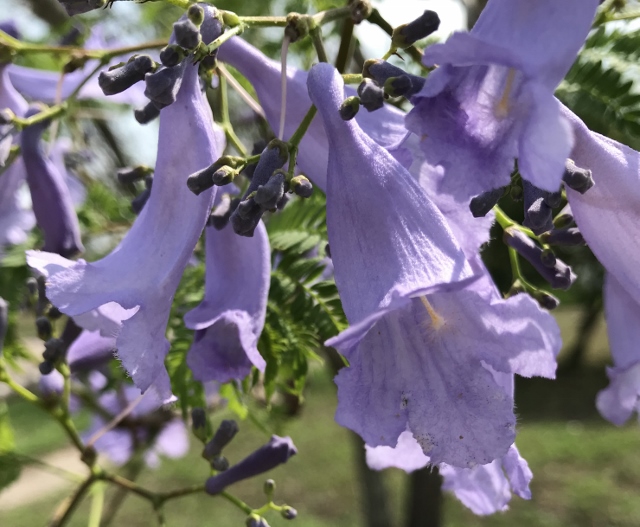
Native to Argentina, Brazil and Bolivia, jacaranda is winter hardy in our U.S. Department of Agriculture plant hardiness zone 10 If you’re drawn to this extraordinary tree, research before purchasing because jacaranda may take seven to 14 years to present the beautiful spring blooms. Trees grown from seed take the longest time to produce blooms. Grafted trees, or those grown from cuttings, may reach blooming age more quickly. Still, it may be three to five years before flowers are produced.
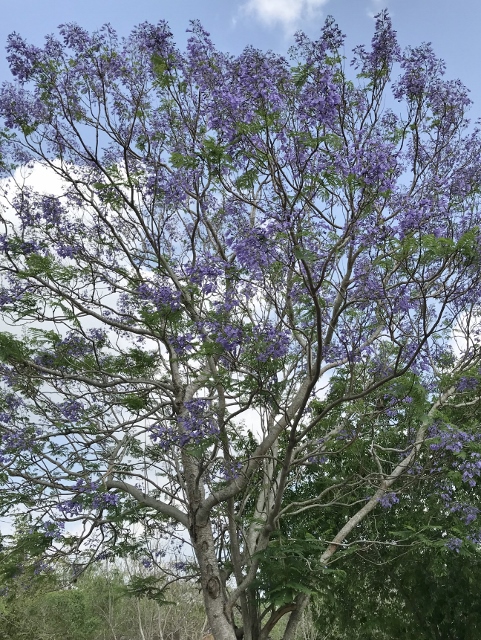
Plant jacaranda in full sun for the most flowers, and in sandy soil with great drainage. Jacaranda is drought-tolerant and adapts well to tough conditions; it’s not salt tolerant. Relatively fast growing, it can get from 25 to 60 feet tall with a wide canopy spread.
Jacaranda presents a blue aura when viewed from a distance. Up close, the tubular blooms are violet-lavender. The tree will continue blooming into early summer. The flowers hang in clusters like a wedding bouquet, with hundreds in each drape.
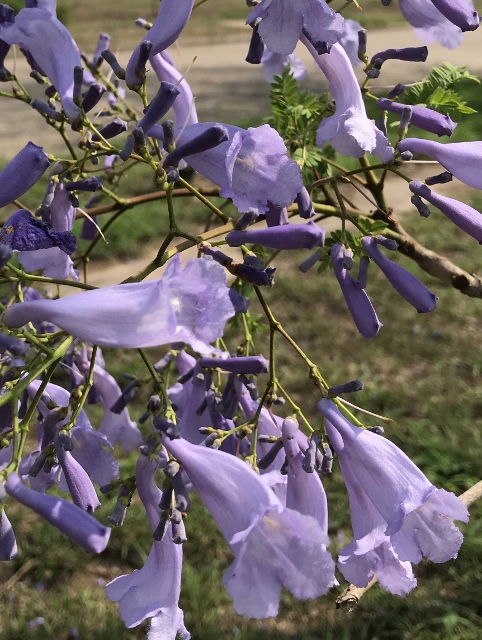
The beauty doesn’t stop when the blooms drop. Instead, they form another artful landscape as a pallet of purple on a sea of green grass which will last several weeks after the blooms are gone from the tree.
The feathery foliage generally drops in spring and begins returning after the flowers drop. Prune young trees to promote one main trunk and keep suckers pruned.
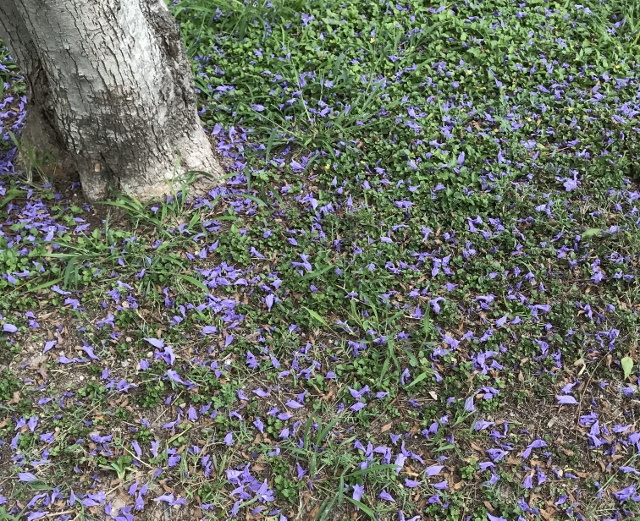
In contrast, yellow-flowering retama trees are in full bloom covering the graceful sweeps of their long flowing branches. Parkinsonia aculeata is the botanical name; also commonly called Mexican paloverde and Jerusalem thorn.
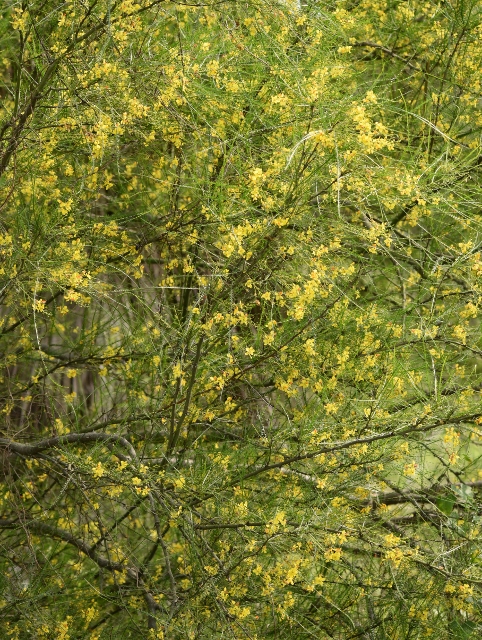
This tree has a profusion of blooms through the warm months and generally after rain.
Native from central Texas south to northern South America and west to Arizona, it is fast growing. It tolerates poor soils, drought, heat and saline. The tree bark is green with wicked thorns in groups of three. Plant in full sun in soil with good drainage. Page 234 in the Dr. Alfred Richardson/Ken King book, “Plants of Deep South Texas,” Retama attracts birds, butterflies, honey bees and carpenter bees.
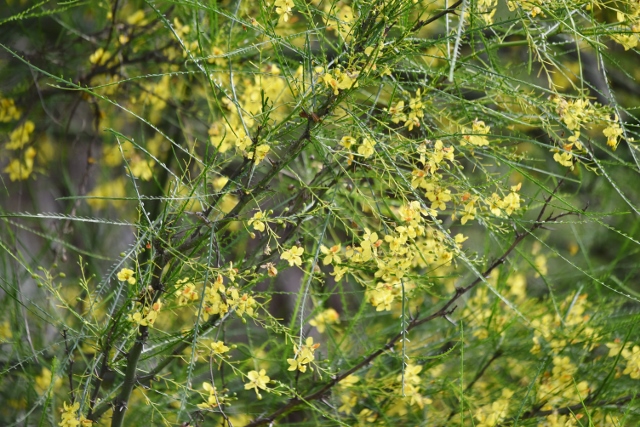
Bougainvillea (genus Bougainvillea) is native to South America from Brazil west to Peru and south to southern Argentina, according to Wikipedia.org. It is actually listed as a woody vine. With a severe pruning during winter, when dormant, it can be kept somewhat bushy.
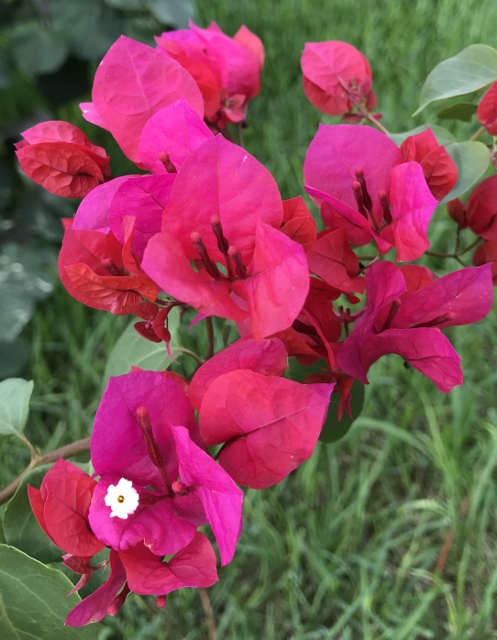
The most difficult problem with bougainvillea is deciding what color you want in your landscape. Colors range from brilliant magenta and deep purple, to orange, coral, vermillion to pastel peach and white.
The colorful bracts are thought to attract birds, butterflies and moths to the tiny nectariferous white flowers for pollination, according to some studies. In my opinion, bougainvillea is best used in a landscape more for aesthetics than for pollinators.
Bougainvillea loves full sun, is drought-resistant, and thrives in almost any soil as long as it is well draining.
A topping of organic matter in spring gives it a good boost. Vines also will enjoy a monthly dose of a general fertilizer during the blooming stage, but at half the listed dose.
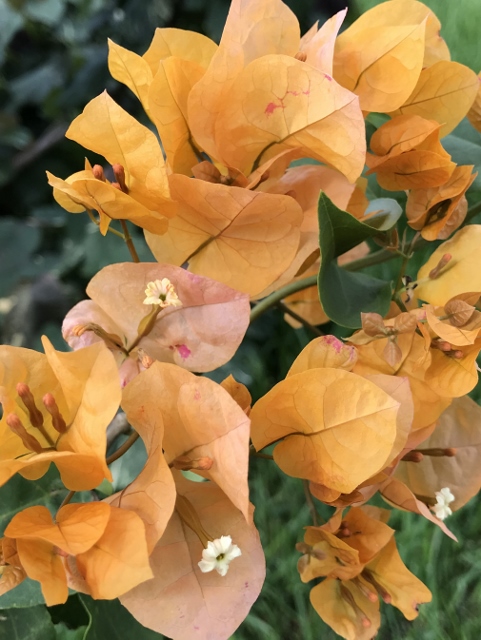
For all the Easter egg colors in the landscape, a basket is needed, right? And along comes basket flower (Plectocephalus americanus) — just at the right time! PDST, page 117, describes it as, “. . . bracts of involucre highly branched, giving a basketlike appearance. . . .”
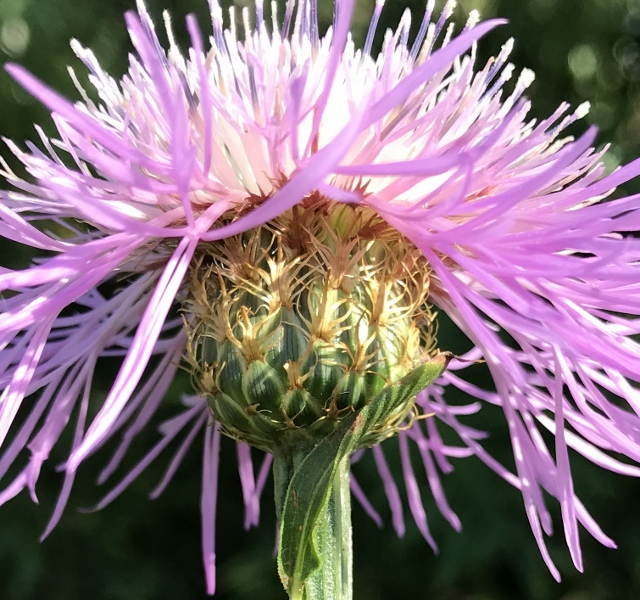
Seeds gathered during late summer, and scattered then, and again in December and February of this year, have produce early April blooms. The seeds also apparently did their own thing because my “regulated” experimental “field” has fewer plants than last year. Close by, in last year’s mist flower bed, many basket flower plants have popped up and in the grass bordering the native flower beds.
No matter where the plants, they’re a hive of activity and a photographer’s delight with pollen-laden furrow bees, whirlabouts, dark flower scarabs, crab spiders, leaf-footed bugs and — my first ever sighting of an American lady butterfly!
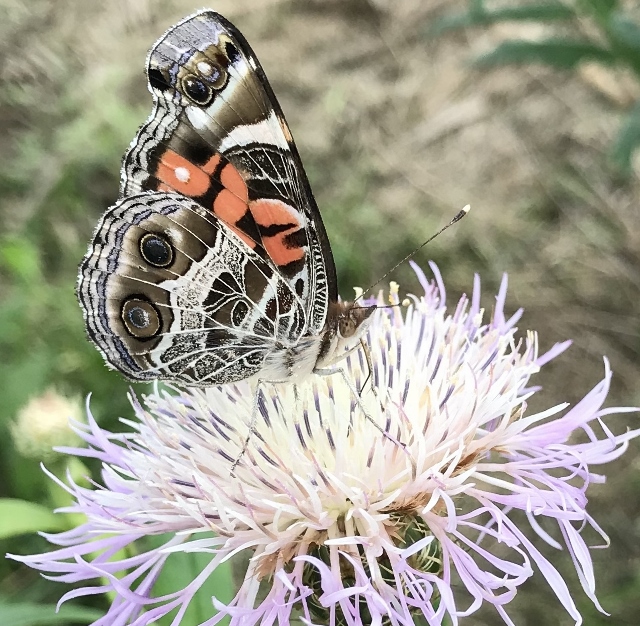

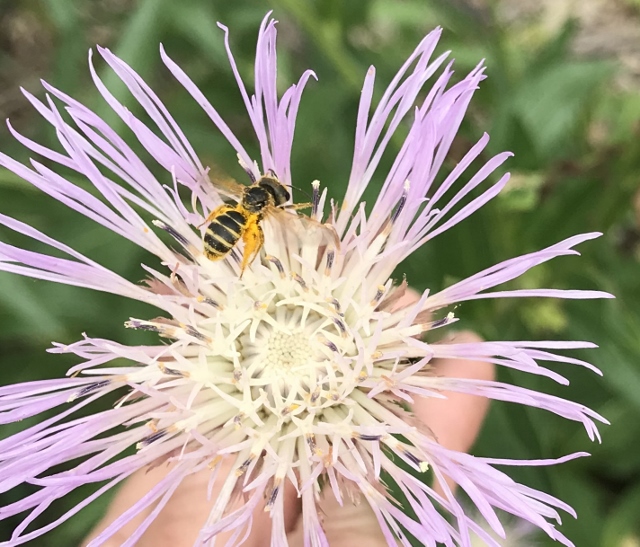

Leave a Reply